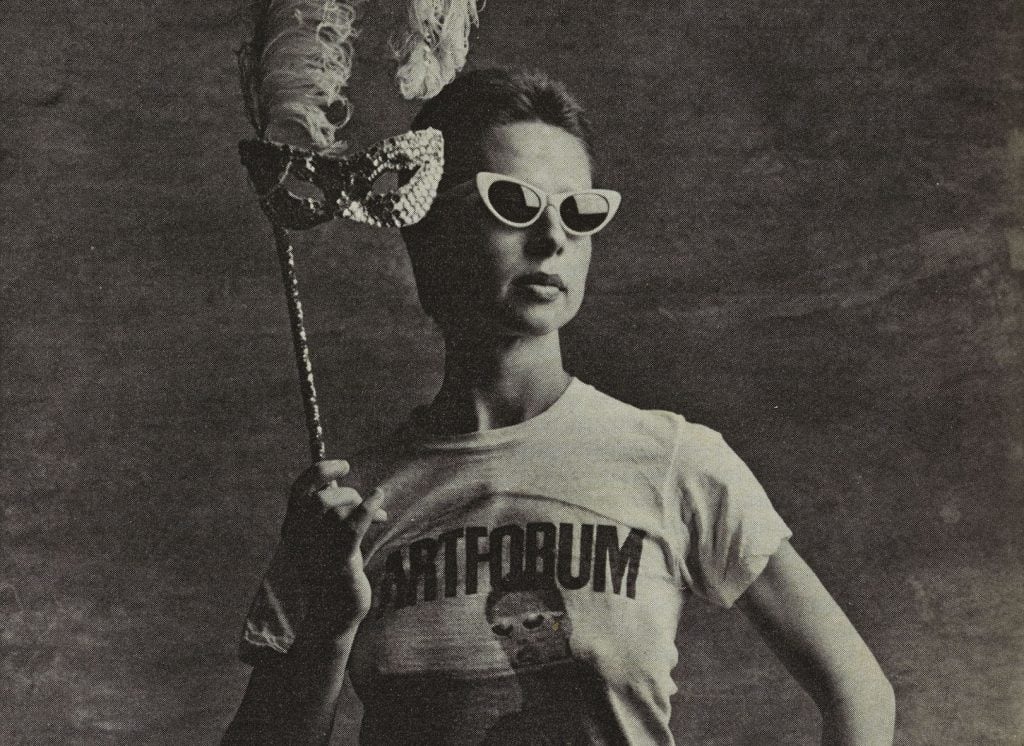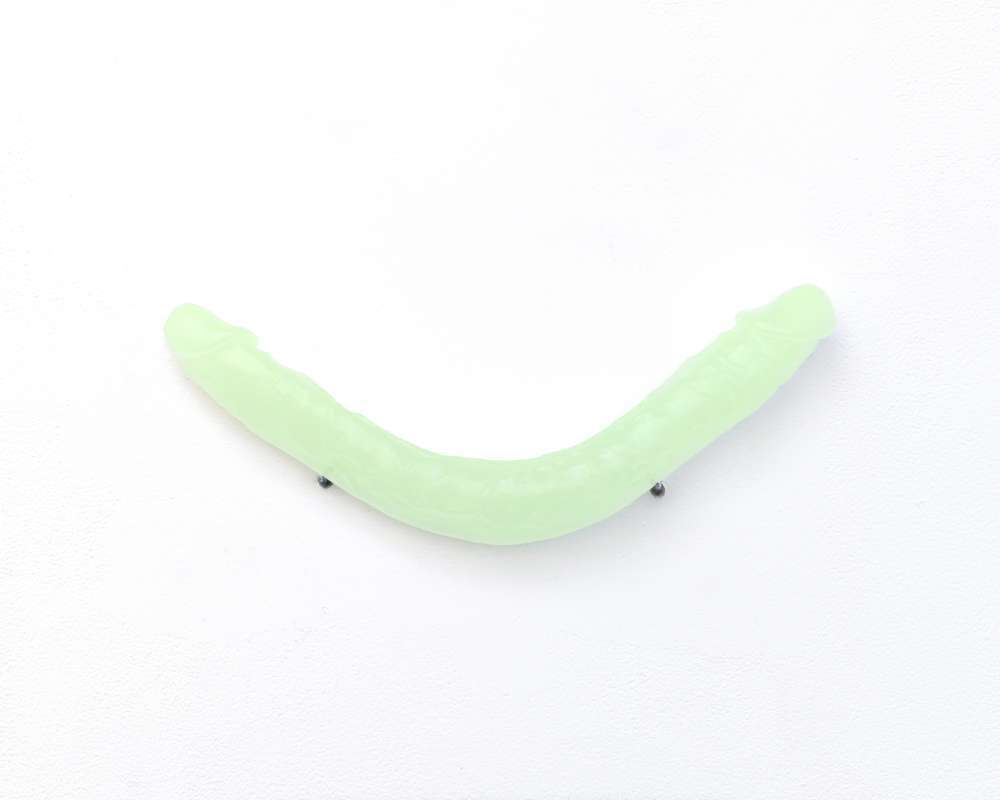Art History
How Lynda Benglis Shocked the Art World With Her Provocative ‘Artforum’ Ad
This edition of "Art Bites" unpacks how "Artforum Advertisement" once sent editors, readers, and feminists into a tizzy.

This edition of "Art Bites" unpacks how "Artforum Advertisement" once sent editors, readers, and feminists into a tizzy.

Vittoria Benzine

This month marks 50 years since Lynda Benglis shocked and titillated contemporary art with Artforum Advertisement. To celebrate, Pace Gallery has partnered with her studio on an exhaustive database around the artwork, including a visual guide to her related bodies of work, and a full bibliography. These resources will all remain available indefinitely on Pace’s site—except for a section cataloguing every statement made by Benglis on Artforum Advertisement, which will come down in December.
Benglis staged this stunt at 33, as a young talent gaining traction for her abstract sculptures of poured wax, cast aluminum, and more. Benglis had met Paula Cooper 10 years prior, and started showing with her in 1969. She had a penchant for provocative ads. The card announcing her May 1974 exhibition with Paula Cooper, for instance, featured an Annie Leibovitz photo depicting her in the style of pinup Betty Graber: bare-assed with her pants around her ankles, staring ambivalently back at the viewer.
Later that year, Artforum editor Robert Pincus-Witten was at work on a piece about Benglis. One of her Metal Knots was slated for the cover, but Benglis also offered to contribute a self-portrait for the story—an artwork that would leverage the platform of the magazine. Even though she offered to pay the costs of printing her proposed centerfold, editor John Coplans said the publication’s editorial pages weren’t for sale. “Its advertising pages, however, were,” critic Richard Meyer later recounted.

American sculptor Lynda Benglis, 1979. Photo by Nancy R. Schiff/Getty Images.
So, Benglis bought two pages just before the masthead through Paula Cooper, who helped Benglis round up delinquent collector payments to cover the $2,436 fee. Artforum had asked for two times the average rate, in case their printer threw a fit. Cooper’s name appears subtly in the vast black negative space on the left side of the spread, per regulation, even though nothing was being advertised. The right side features Arthur Gordon’s photograph of Benglis—nude, lubed, and brandishing a double-edged dildo. Her pubic hair hides the latex toy’s opposite end, making the comically large appendage almost look authentic.
Artforum publisher Charles Cowle found the photo lewd, but he didn’t want to be accused of censorship. Coplans, meanwhile, had to convince the printer to go through with it. Benglis got booted from the cover in the process.
When the photograph debuted, few knew how to respond. Was it art, or an ad? Was Benglis a girl mocking masculinity, or a boy in drag? Was she using art to comment on pornography, or vice versa? It’s all of the above, according to the artist. “I wanted to put myself on a pedestal and feel okay about it. I wanted to present myself in all roles, but in a joke manner,” she said in 1975. “It’s all symbolic. I can choose to make myself into anything, even into an object. In the pinup ad, I am both accepting and denying the idea of woman as object—and thus getting rid of it.”
But not everyone got it. Second-wave feminists considered Benglis’s willingness to engage with pornography in any capacity abusive. Fans applauded her bravado. Readers wrote letters, schools canceled subscriptions, and five of Artforum’s six editors, incensed by Benglis’s underlying commentary about the way art and advertising were becoming indistinguishable, penned an open letter calling Artforum Advertisement “an object of extreme vulgarity.” Two left to start their own magazine.

Lynda Benglis, Ghost Of Smile (1974/2016). © Lynda Benglis.
Benglis cast five metallic versions of her infamous curved dildo—one for each of the aggrieved editors—in a series titled “Smile.” Then, she made a phosphorescent polyurethane edition called The Ghost of Smile. Pace is selling limited-edition shirts featuring that artwork this month, and reduxing others featuring Benglis in Artforum Advertisement.
Benglis frequently reproduces her work in new mediums, but these shirts still say it all. Fifty years later, revolution has been commodified, and shock value has lost its power. Even Benglis considers Artforum Advertisement tired. While there will likely never be another such stunt, this month offers opportunities to meditate on fresh approaches to the ever-intensifying issues of sexuality, gender, and self-promotion that Benglis weaponized.
What’s the deal with Leonardo’s harpsichord-viola? Why were Impressionists obsessed with the color purple? Art Bites brings you a surprising fact, lesser-known anecdote, or curious event from art history.